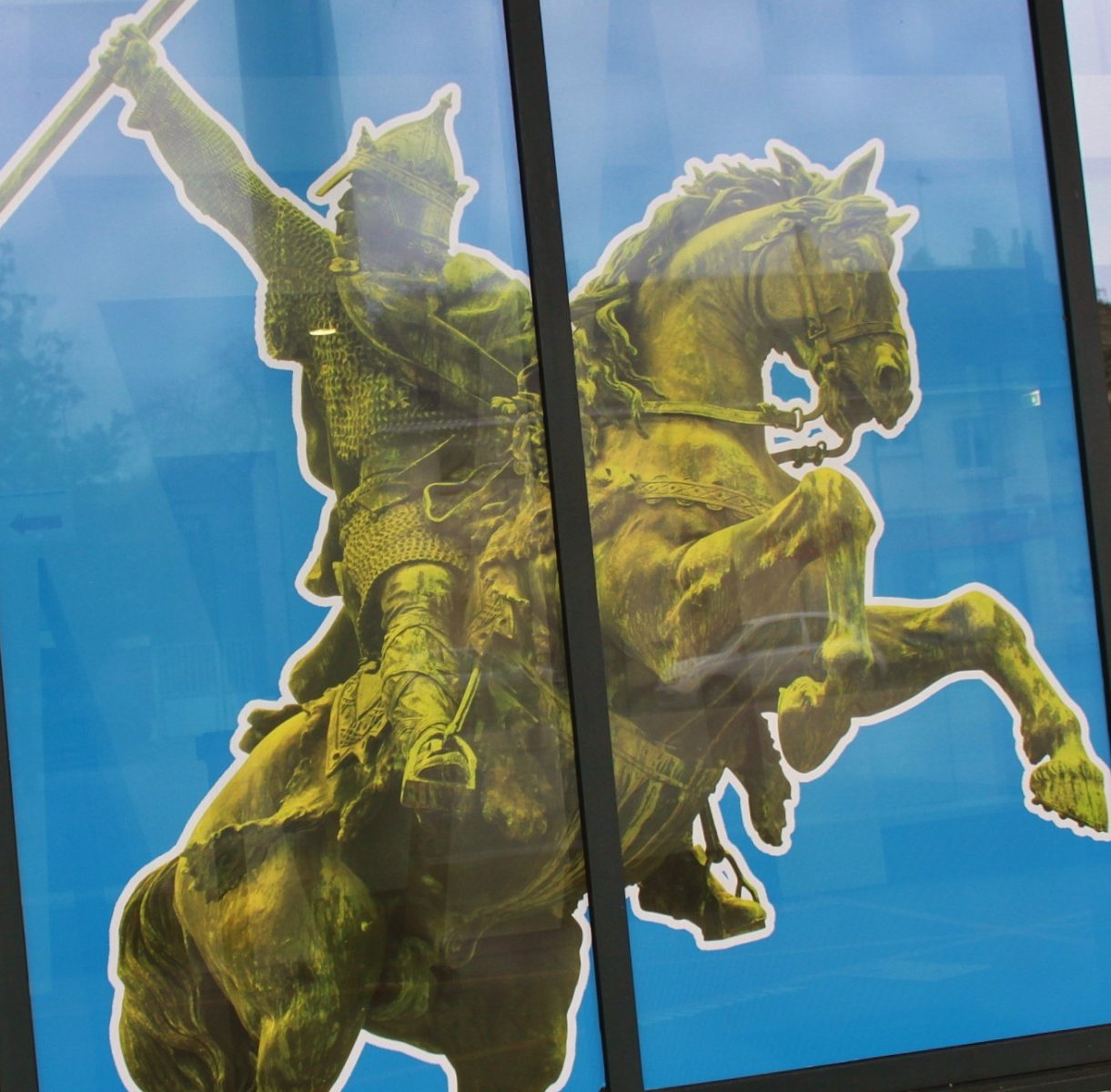Dukes of Normandy Historical Background 911 – †927 – Rollo (Robert I), Earl of Rouen, jarl of Normans 927 -†942…
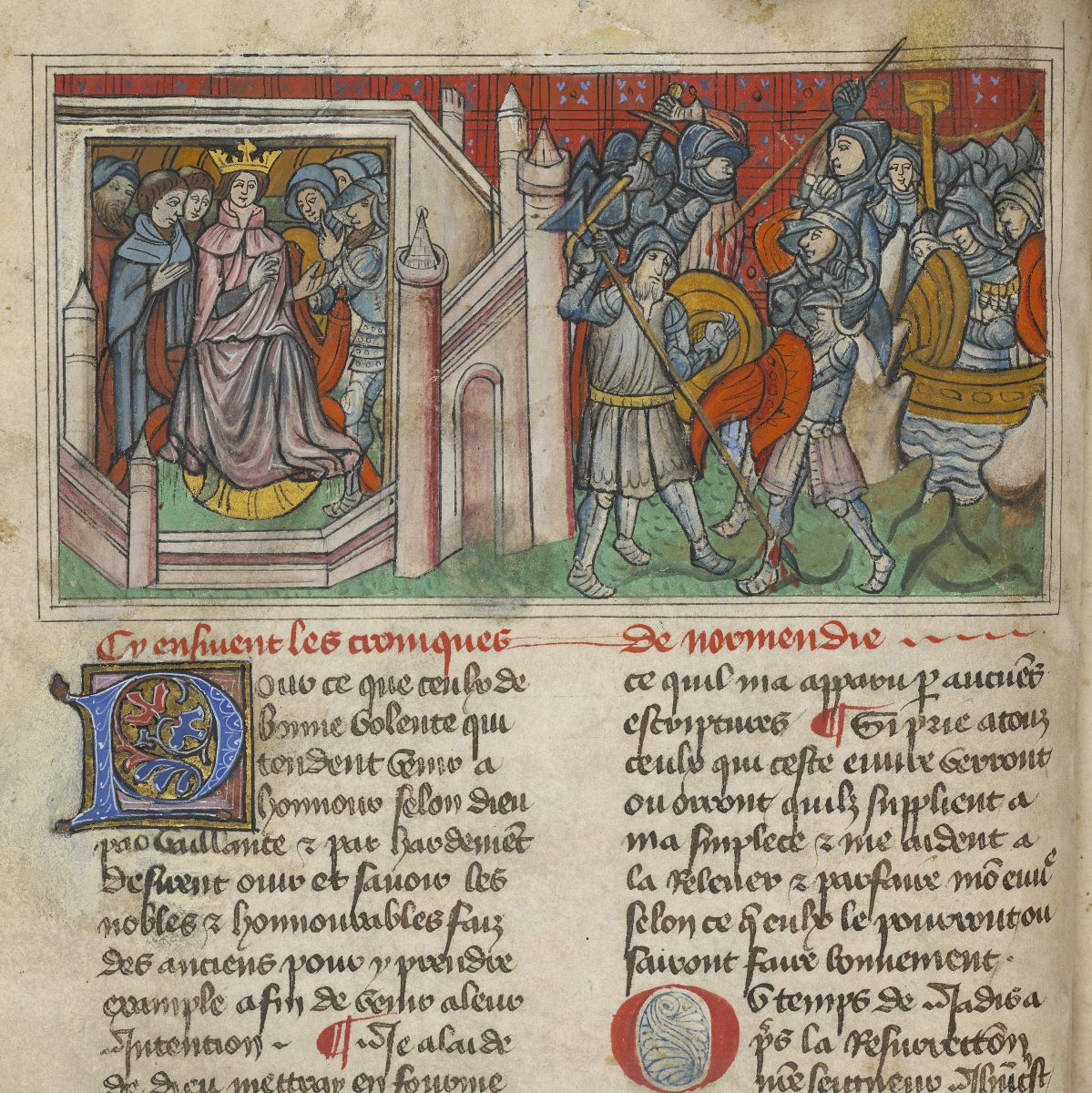
Chronicles of Normandy
The text was written between 1350 and 1370 by an anonymous Norman author, probably from Rouen. This story is based on the Roman de Rou of Wace (1160-1174), as well as on the Chronicle of Normandy of the 13th century. The Chronicle focuses on Norman ducal and royal English characters. It begins in 911 with Rollo, the Viking chief, whom the king of France Charles III the Simple donated the County Rouen in the Treaty of Saint -Clair sur Epte. Depending on the version, the story ends either in 1204, with the annexation of Normandy to the crown of France, or at the latest in 1217 with the accession to the English crown of Henry III , son of John Lackland.
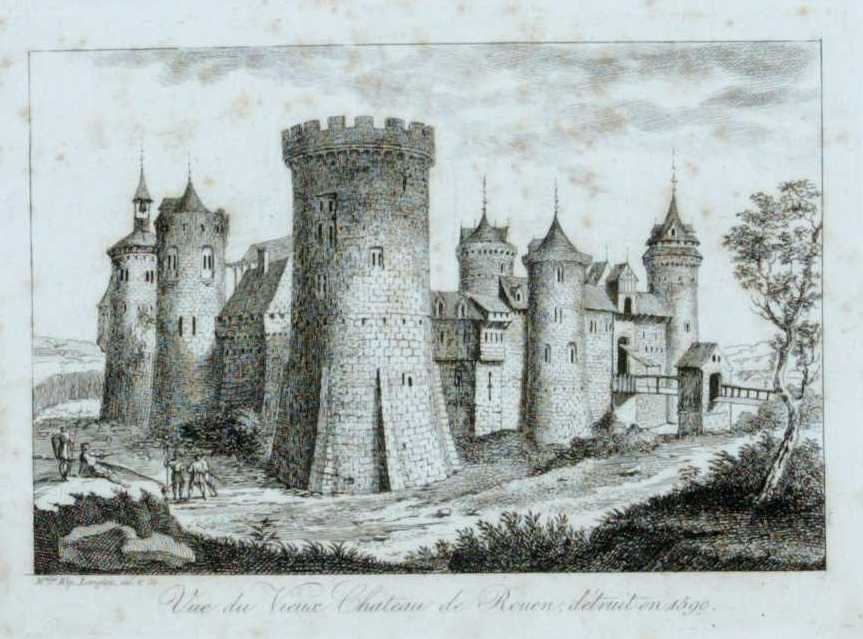
Castle of Rouen
Photography of Joan of Arc Tower
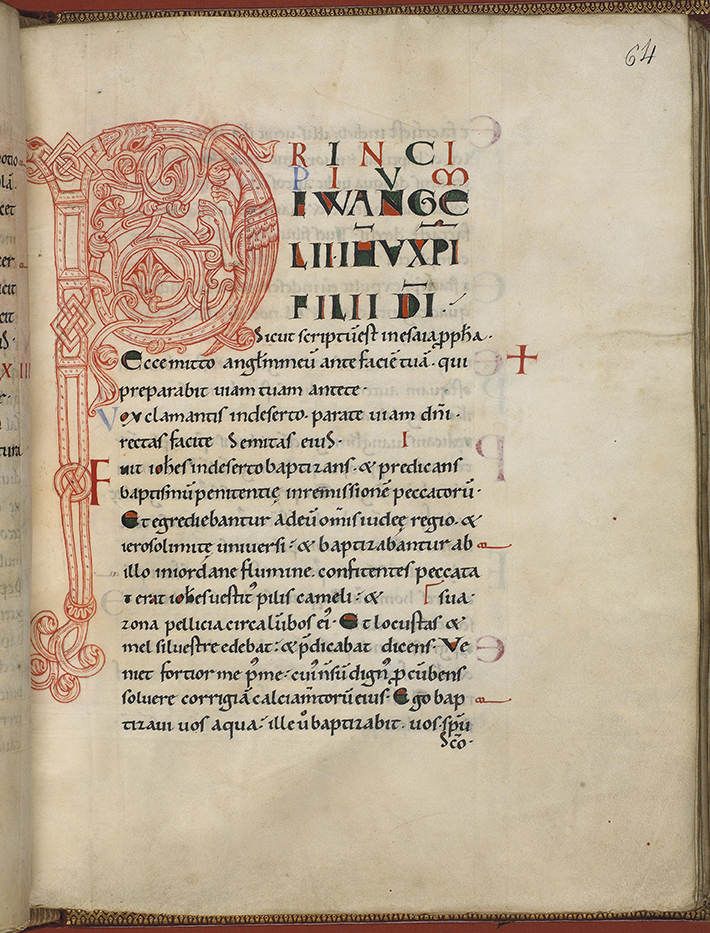
The Gospels of Jumièges
11th century is deeply marked by the appearance of illumination in Norman manuscripts. This is mainly due to the monastic revival and the need for religious communities to build a library. England is so famous for its art schools and its signature style. Several workshops are experiencing significant radiation as those of Canterbury and Winchester.
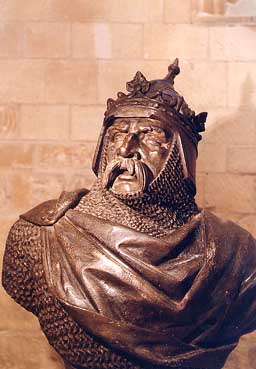
William the Conqueror
Despite the difficult start where the young Duke has to face opposition from a part of the Norman aristocracy, peace is essential in the duchy and the ducal power is reinforced.
William grows his ancestors’ past alliances and develops new ones, imposing himself as a territorial prince with international reputation.
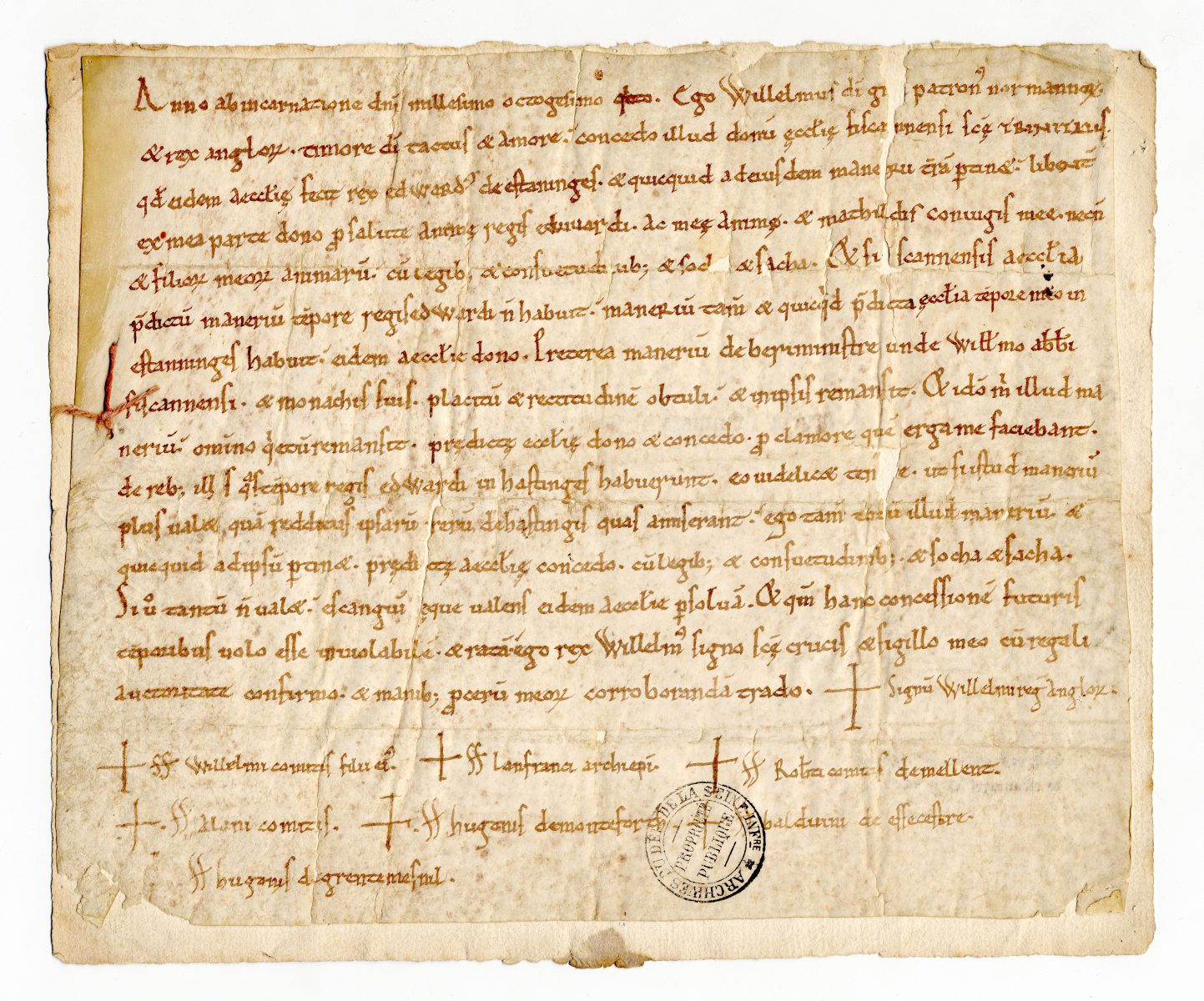
Confirmation charter of William the Conqueror to Fécamp Abbey of Steyning
Confirmation charter of William the Conqueror (patronus of the Normans and King of the English) to Fécamp Abbey of Steyning (Estaninges), West Sussex, which King Edward (the Confessor) made to the abbey. He also grants the manor of Bury to the abbey in compensation for the claim which they made against him for the property which they had in Hastings (Hastinges) in king Edward’s time.
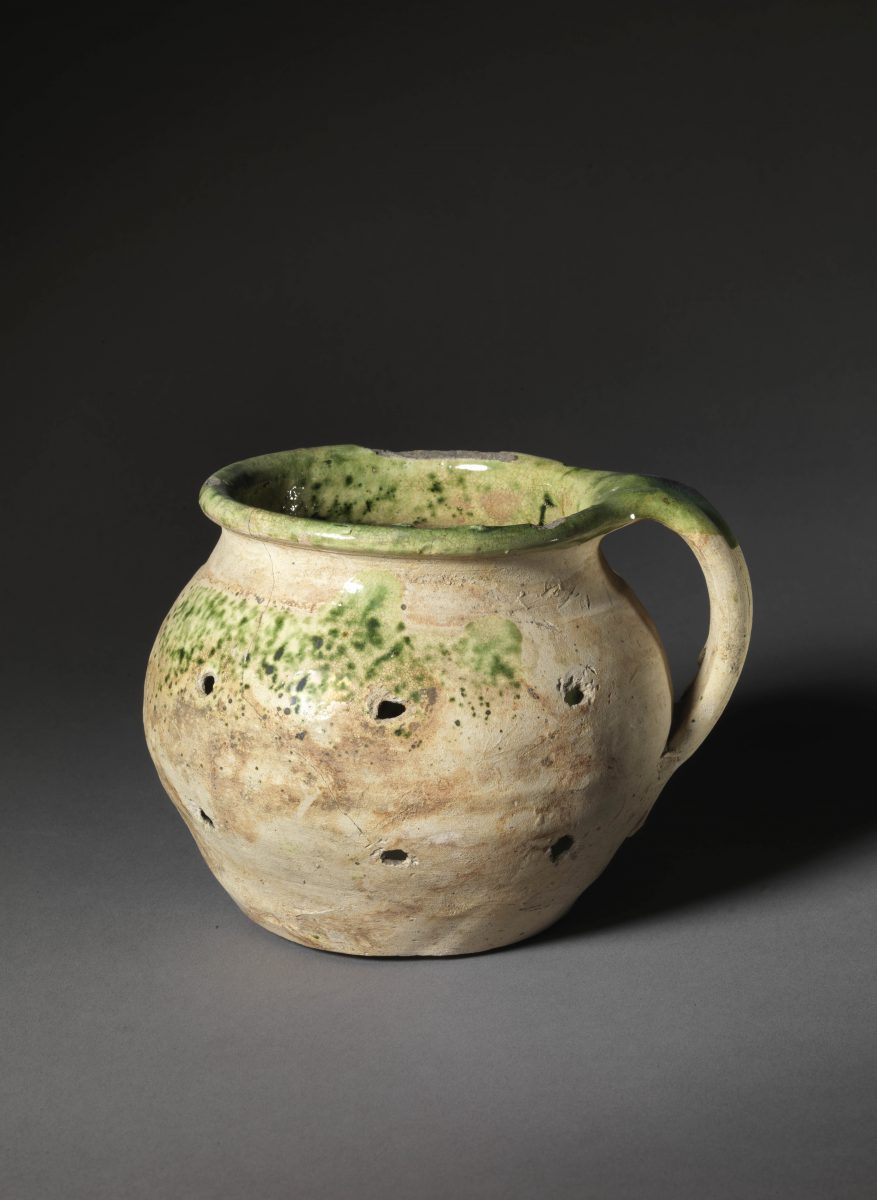
Absolution cross and funeral pot
In the Middle Ages, these crosses were placed on the dead, both in France and England, along with a funeral pot.
They have the shape of the Maltese cross and remember quite well the consecration crosses and crosses of cemeteries in 12th century.
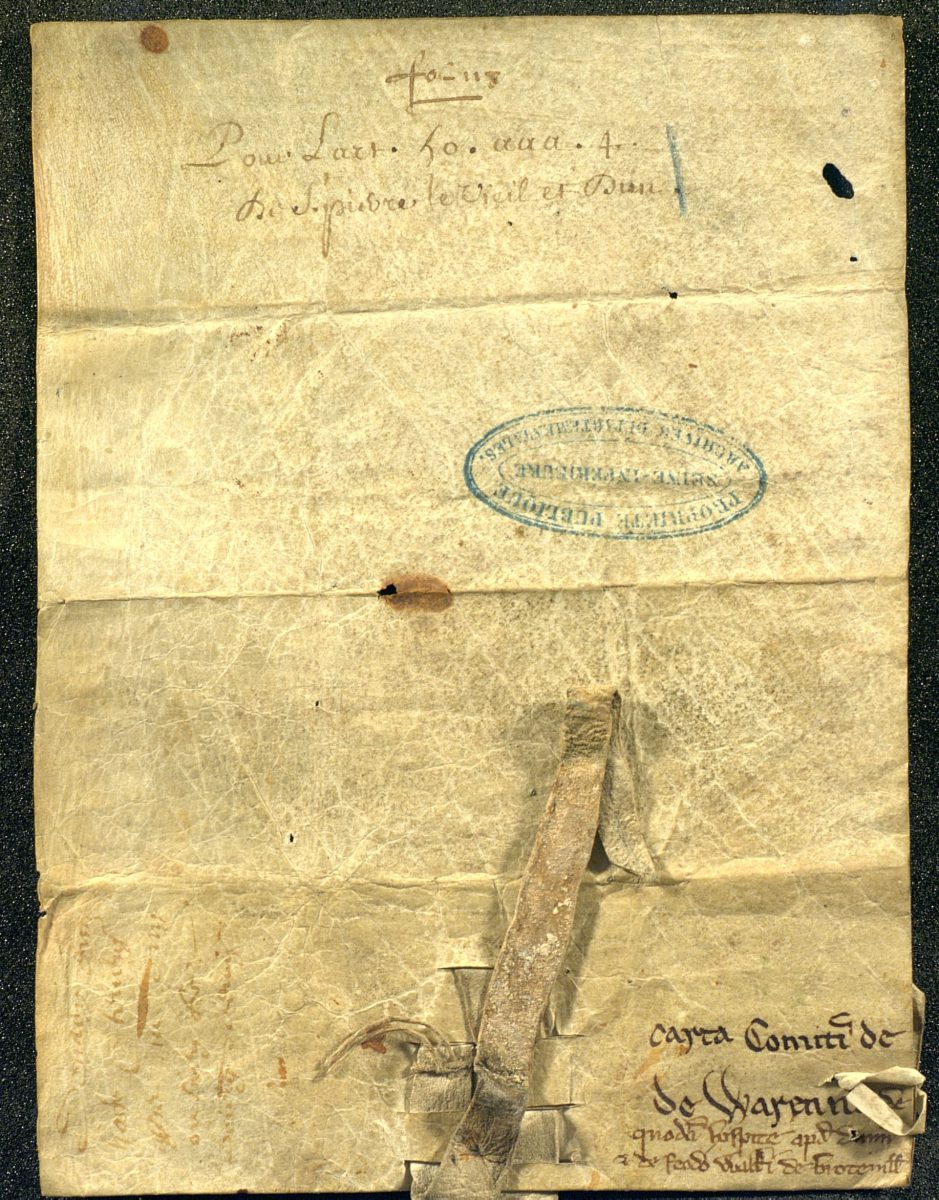
Charter of William of Warenne, son of the first Lord of Lewes
After the Conquest, Sussex was divided into administrative areas known as ” rapes “. There were three in East Sussex – Hastings, Pevensey and Lewes. Count of Eu received the rape of Hastings, Count of Mortain that of Pevensey, while Guillaume de Varenne became Lord of Lewes.
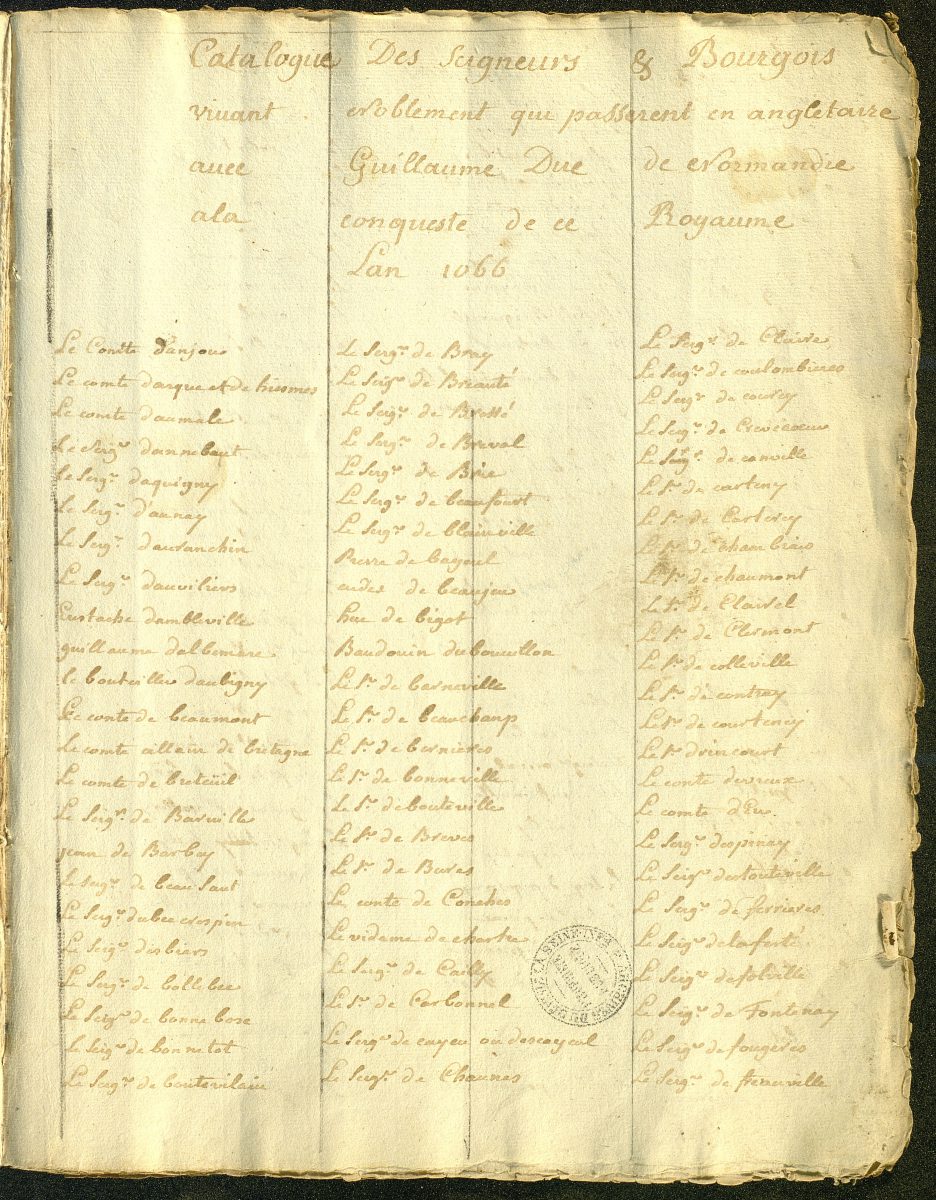
List of the companions of William the Conqueror
Upon Edward the Confessor’s death in 1066, Harold is crowned King of England, and takes the throne which amounted to William the Conqueror.
When Harold refuses to give the kingdom back to him, William decides to raise an army and get across the Channel.
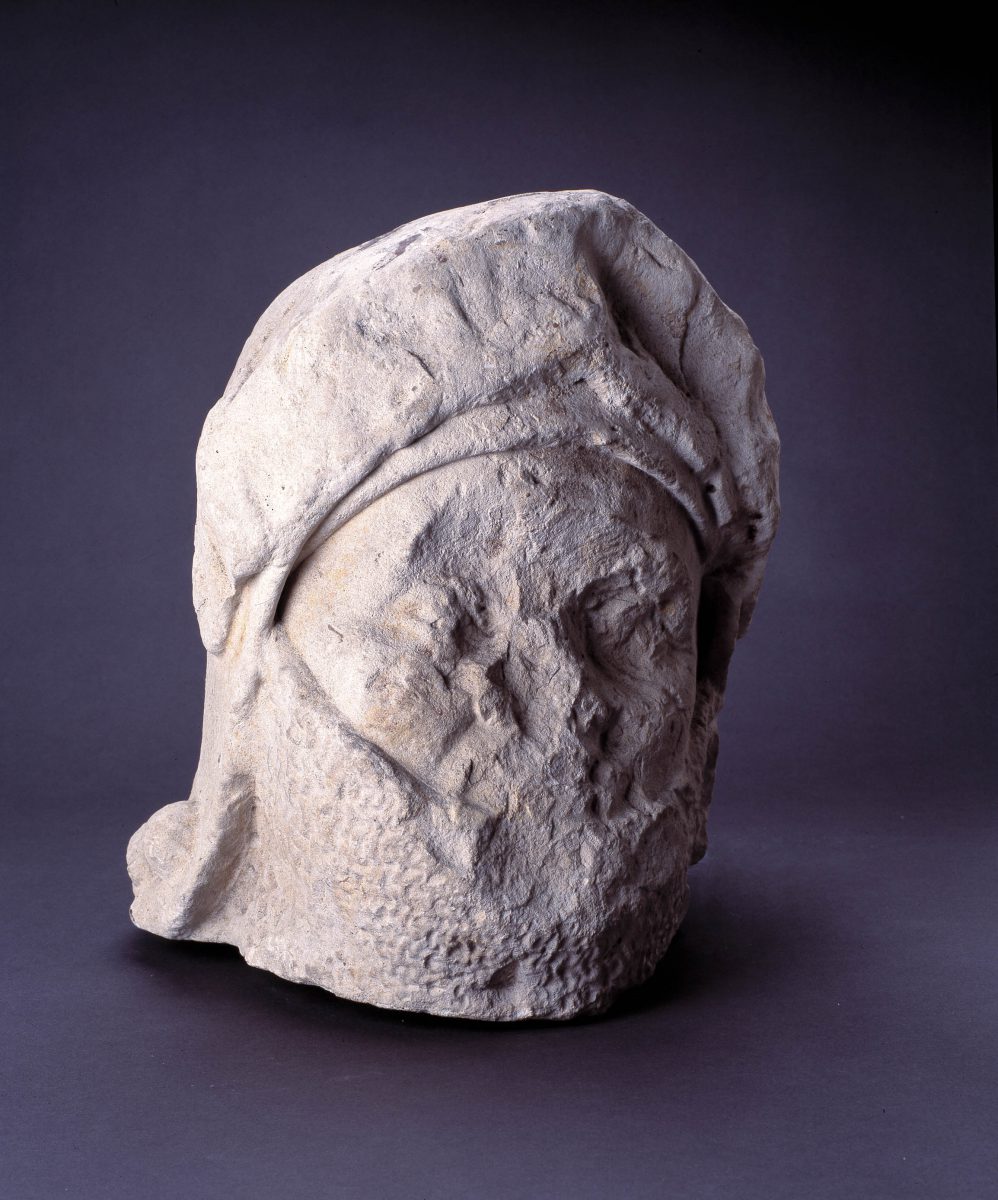
Helmeted head in stone
Helmeted head in stone Historical Background Helmeted head in stone, supposedly of Du Guesclin – 15th century Meant to decorate…
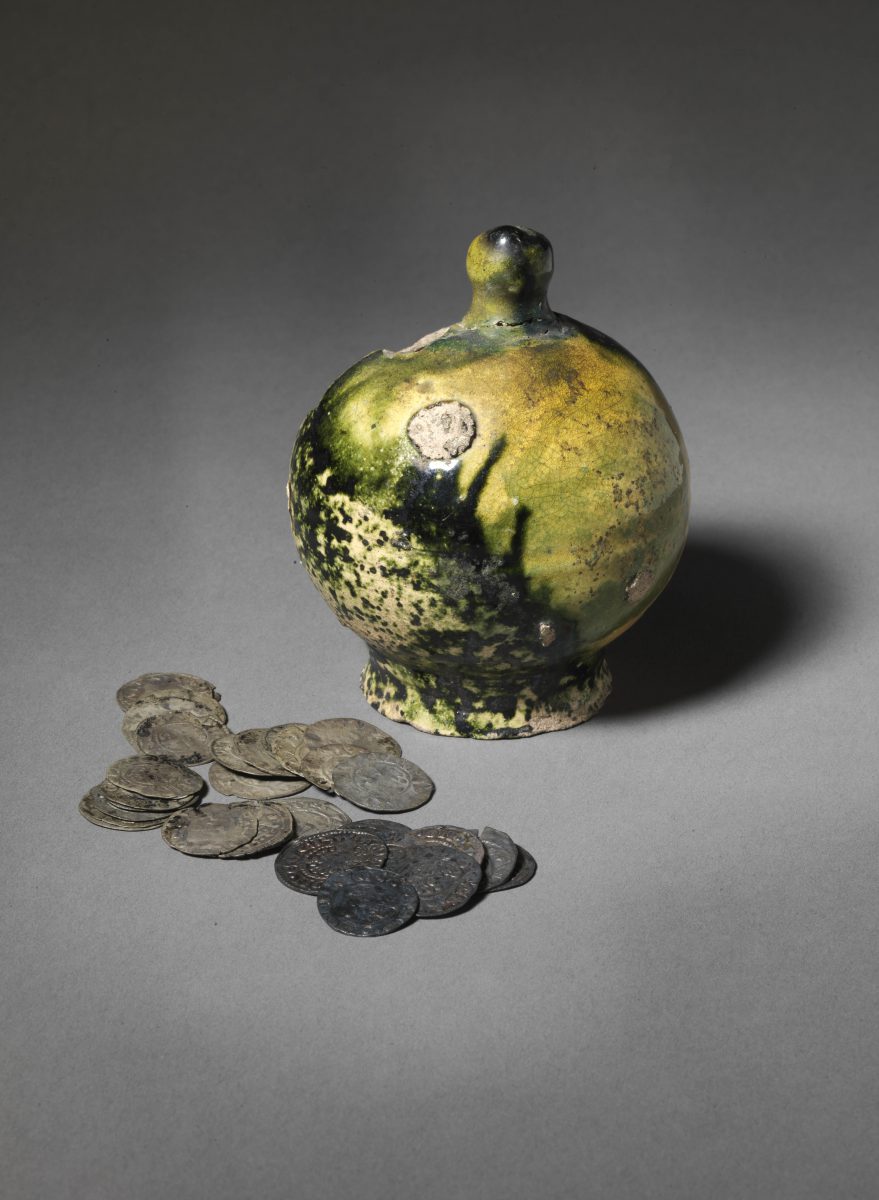
Piggy bank and coins
In late 12th century and early 13th century, in the French regions
dominated by the Kings of England from the dynasty of Plantagenêt,
english coins circulated frequently along with local coins.
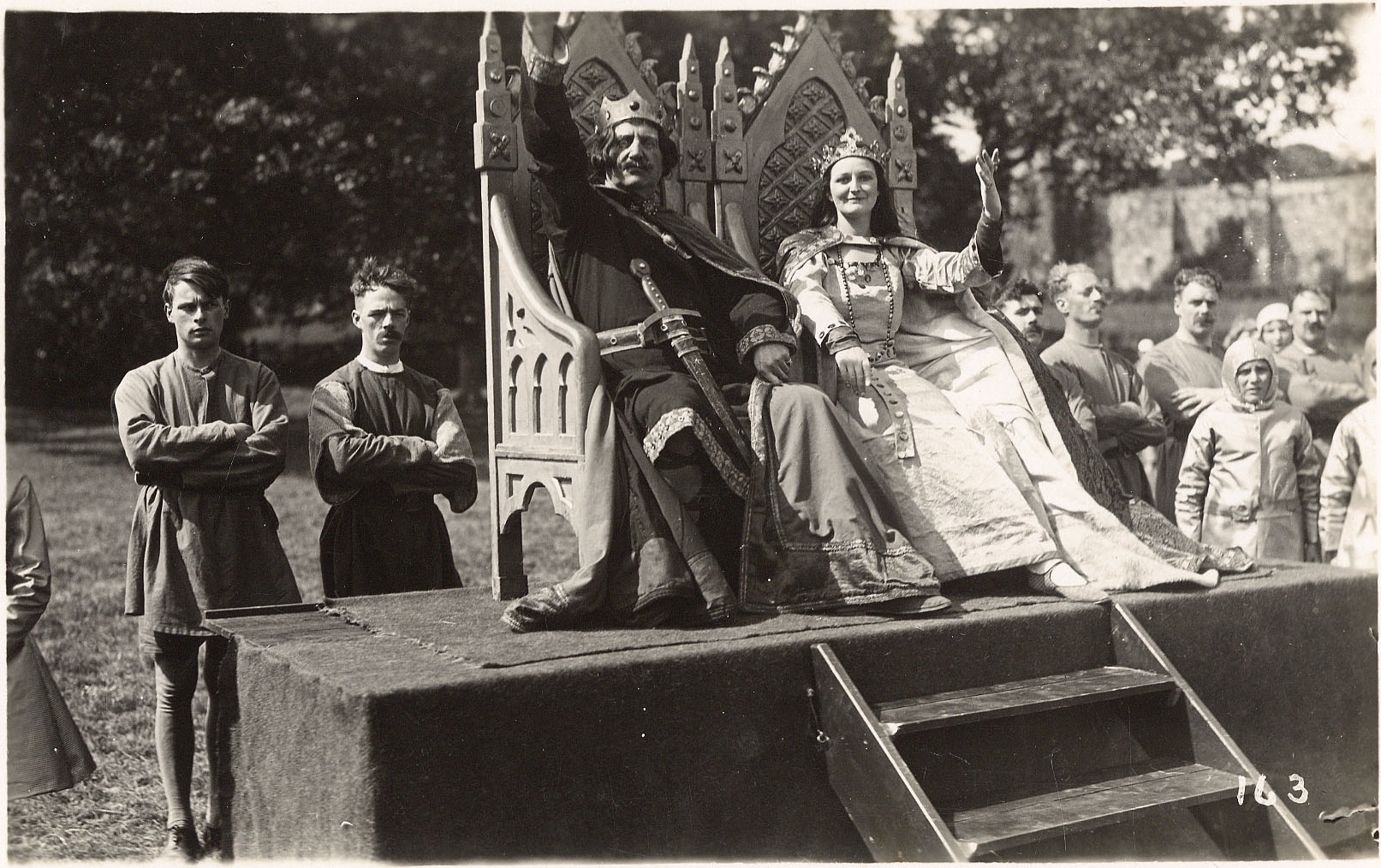
Re-enactment of the Battle of Hastings
Photographs of the re-enactment of the Battle of Hastings at the Battle Abbey Pageant in July 1932.
(ESRO: PCA 236/3, 5)
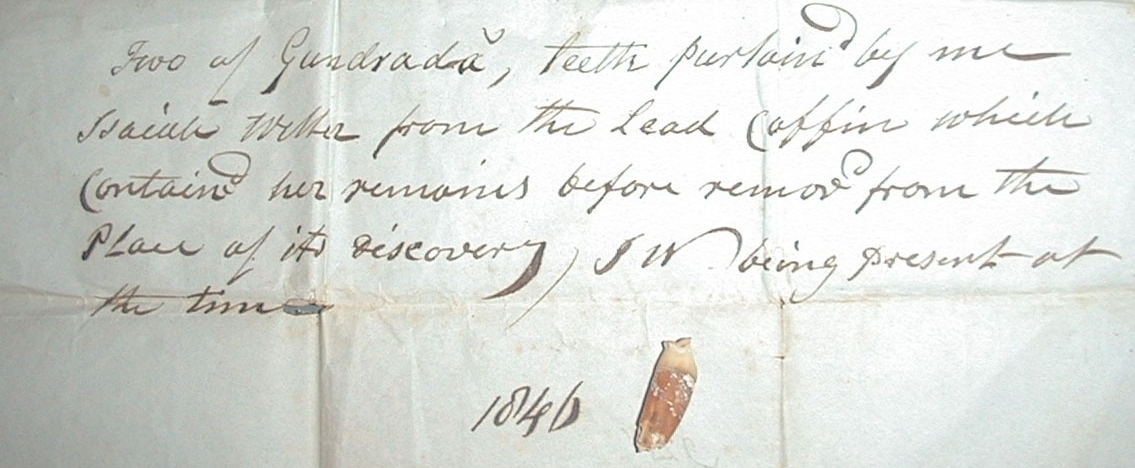
William de Warenne and Gundrada
William de Warenne and Gundrada Historical Background William de Warenne was an early Norman baron who fought with William the…
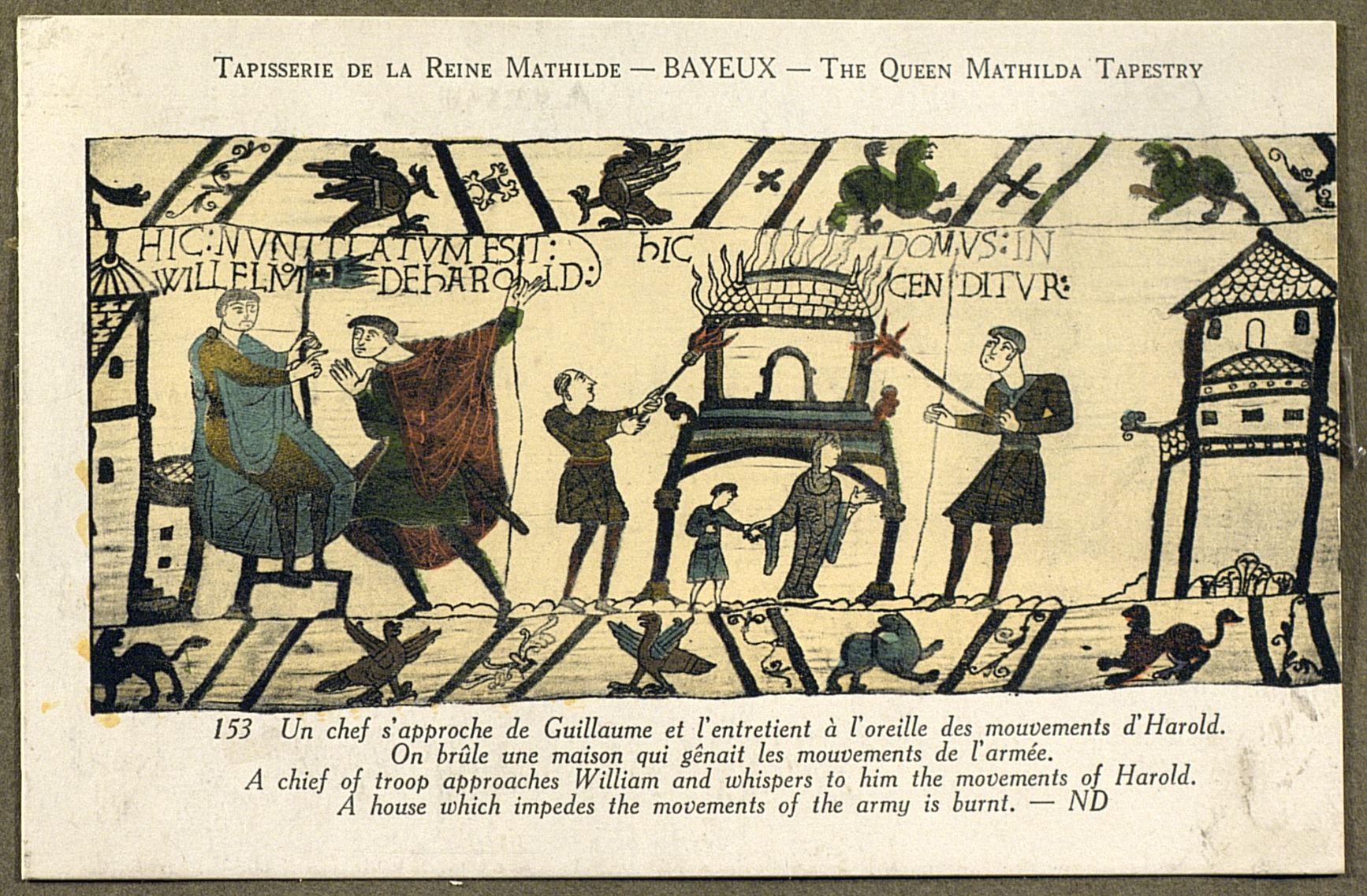
Bayeux Tapestry
Bayeux Tapestry, or Queen Matilda’s Tapestry, or even older Tale of the Conquest is a 70 meter-long embroidery, composed of 9 panels of linen cloth, showing 58 scenes, each being captioned in Latin.
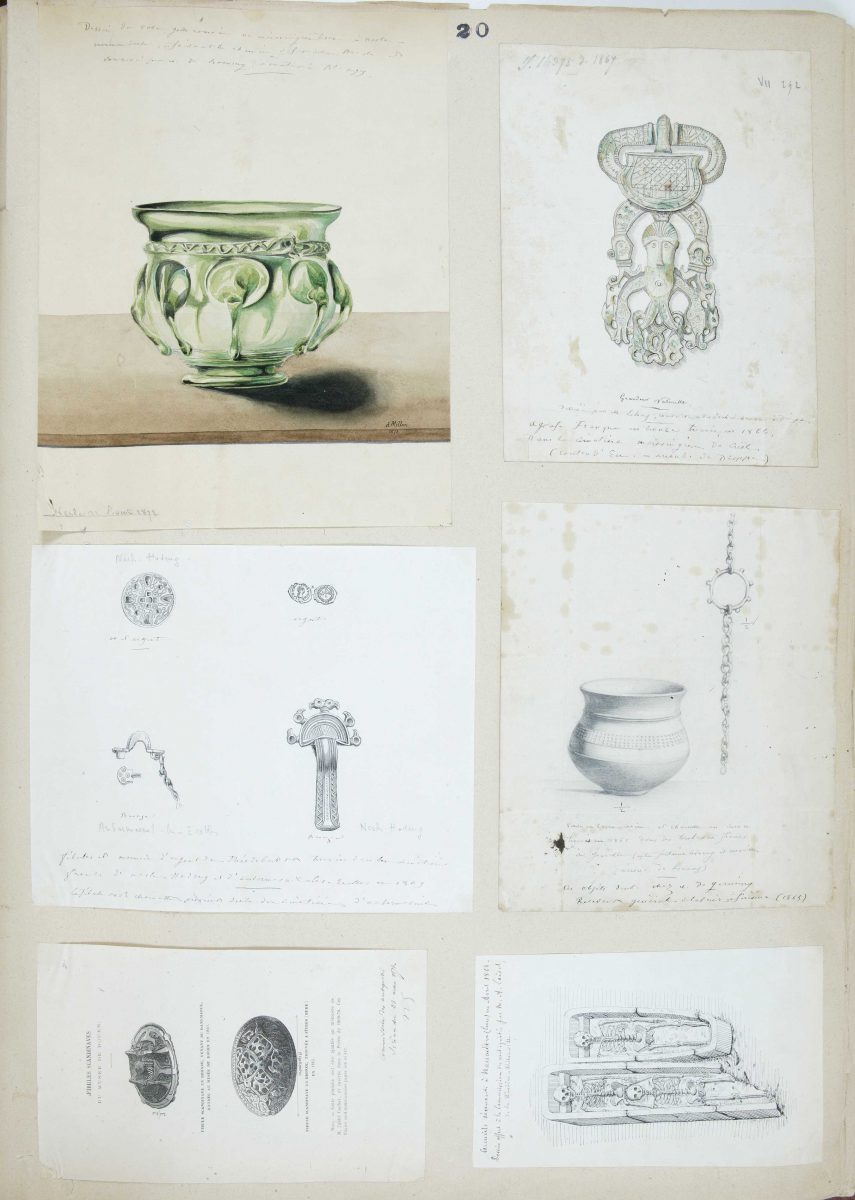
Scandinavian fibulae
Objects on this board were all presented to the departmental Commission of Antiquities on 23 May 1871.
Preserved in the Museum of Antiquities, they were discovered in several places in Seine -Maritime and Eure between 1840 and 1871 ( Aubermesnil-les-Erables, Caudebec, Pîtres ) .
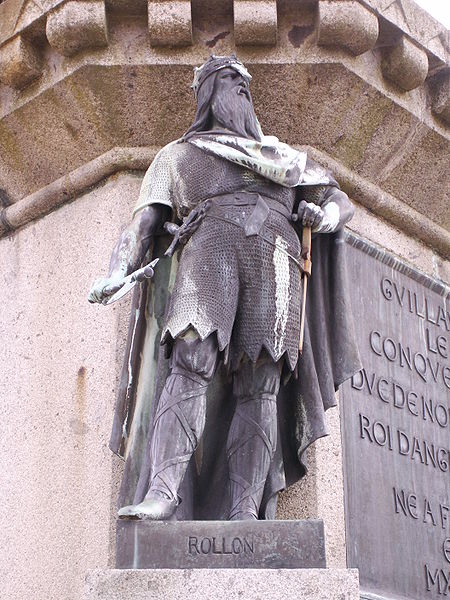
Lithography of Rollo, first duke of Normandy
First Earl of Normandy, Rollo has generated much controversy. From Denmark or Norway, his story is known to us through Dudo of Saint -Quentin, Norman chronicler of 11th century.
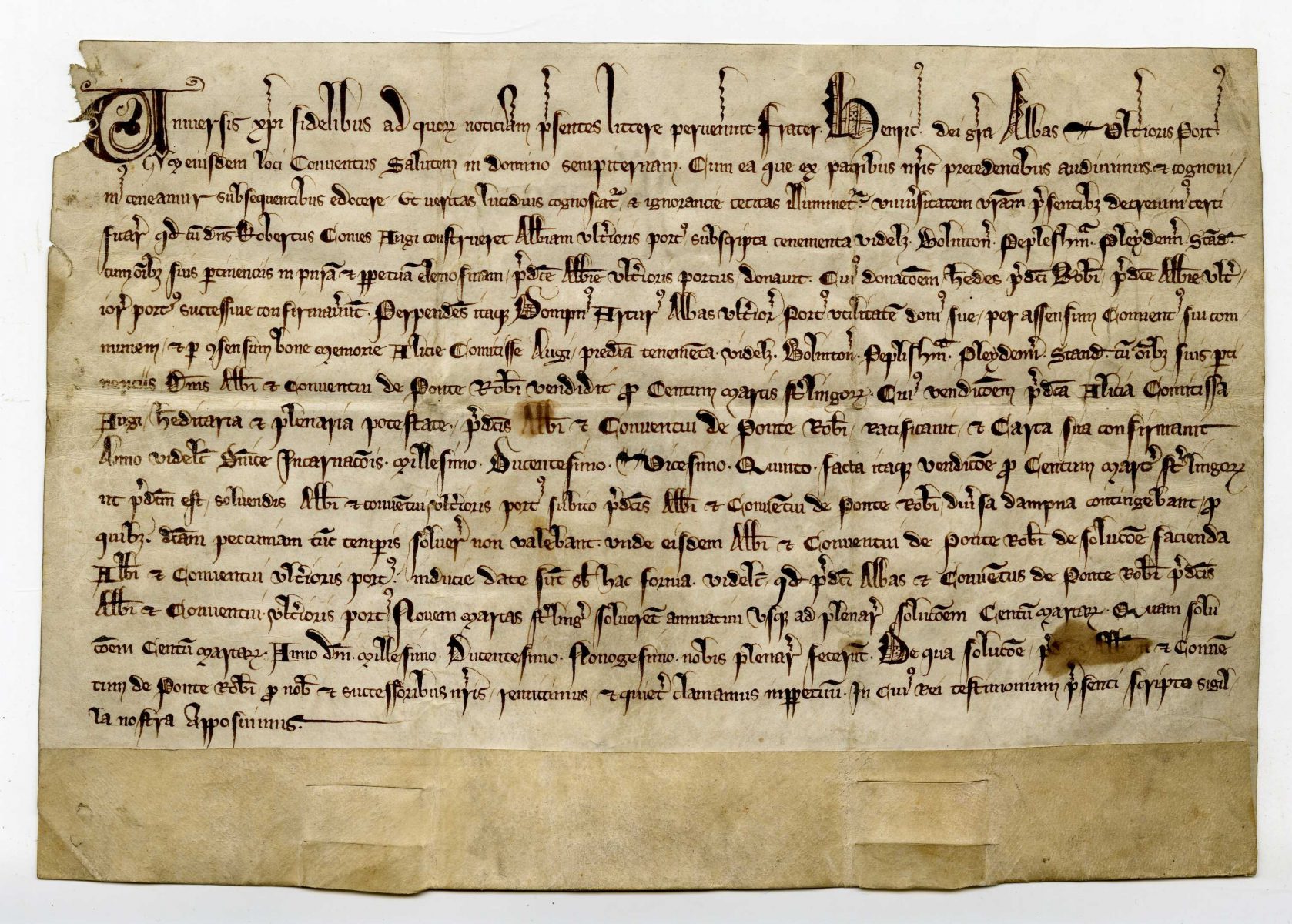
Certificate for payment by Henry abbot of Tréport to the abbot and convent of Robertsbridge
Henry abbot of Tréport (in Normandy) reminds that tenements at Bolinton and Pebsham (in Bexhill), Playden and Stand was sold to the abbot and convent of Robertsbridge, for £66 13s 4d.
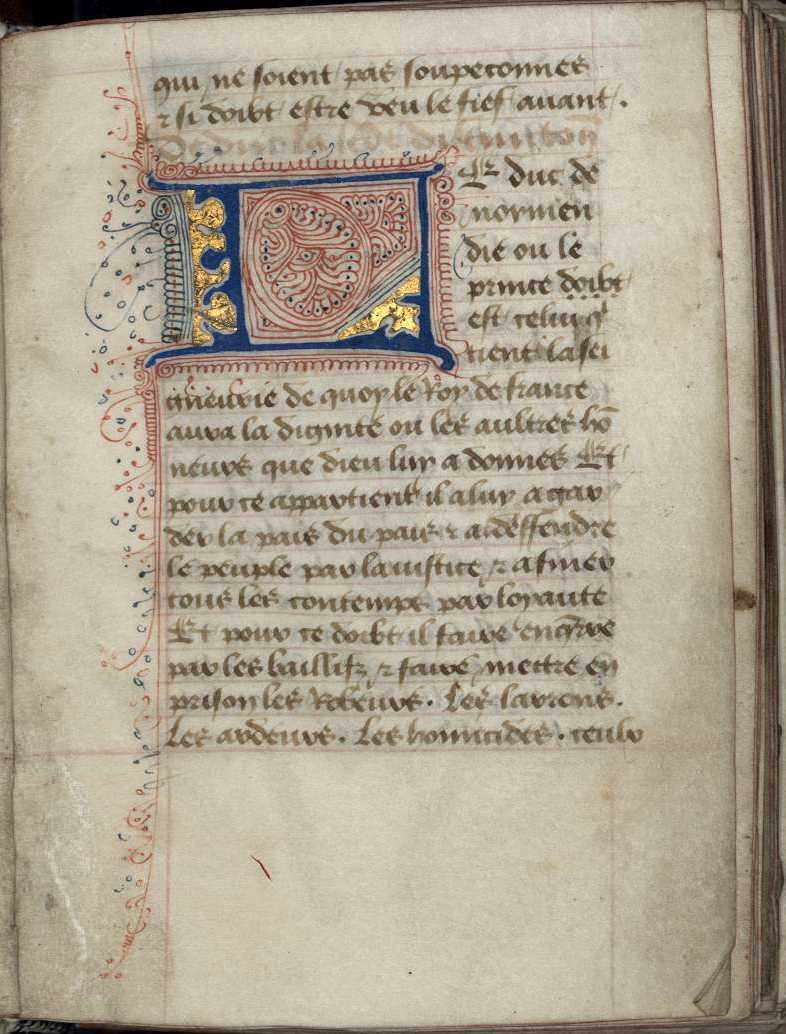
Norman customs
Normandy had laid down in writing a set of legal rules, called the Très ancien coutumier de Normandie in the late part of the 12th century. The second part of these rules would be put in writing after Normandy became part of France in the first half of the 13th century and was to remain in force until the Revolution.
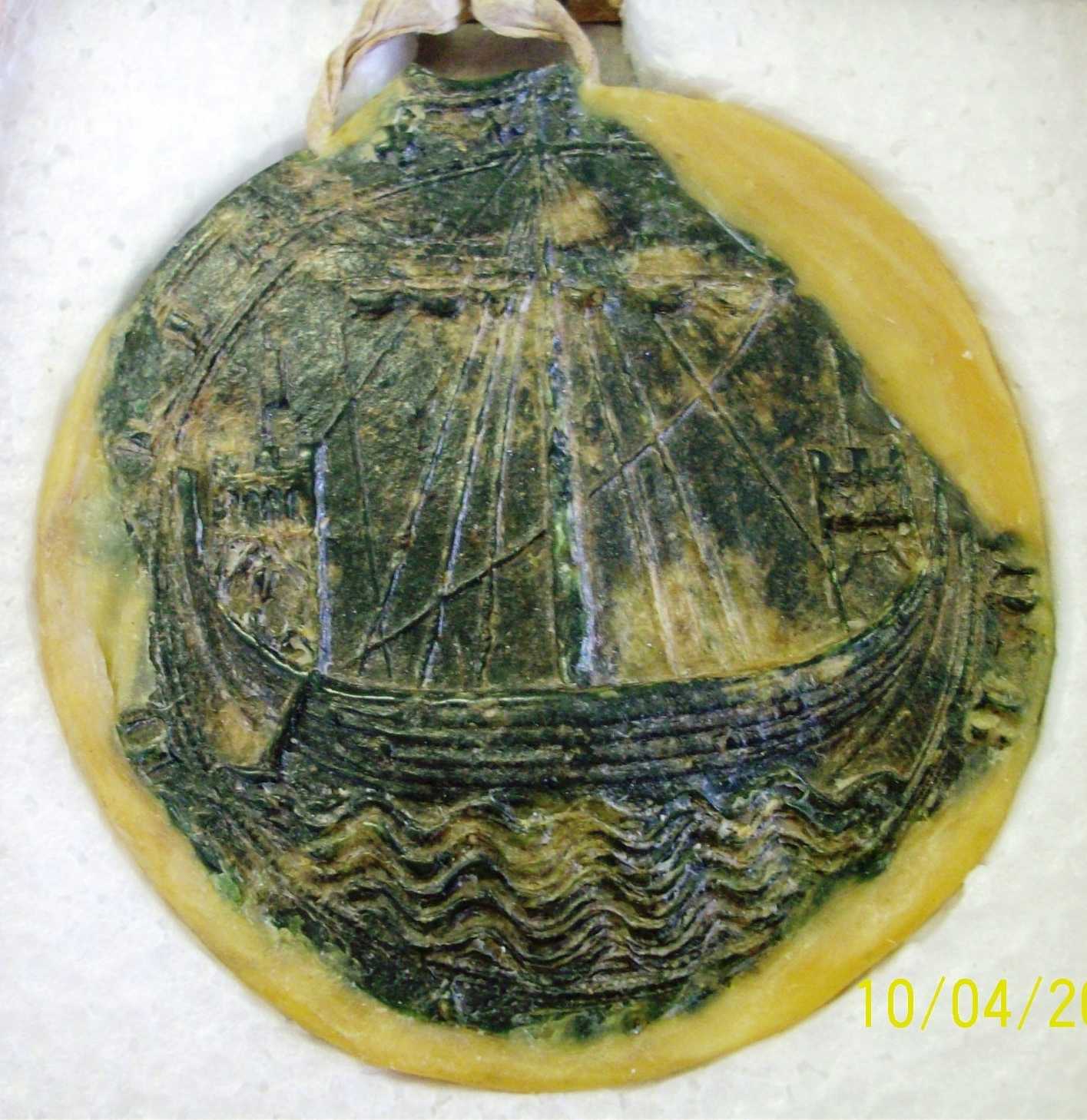
Seal of Rye
A deed conveying property in Merstret in Rye from John and Alice Torel to Peter and Denise Hegsthone. There are two seals attached, both in green wax. The smaller is of John Torel and shows a ship with one mast.
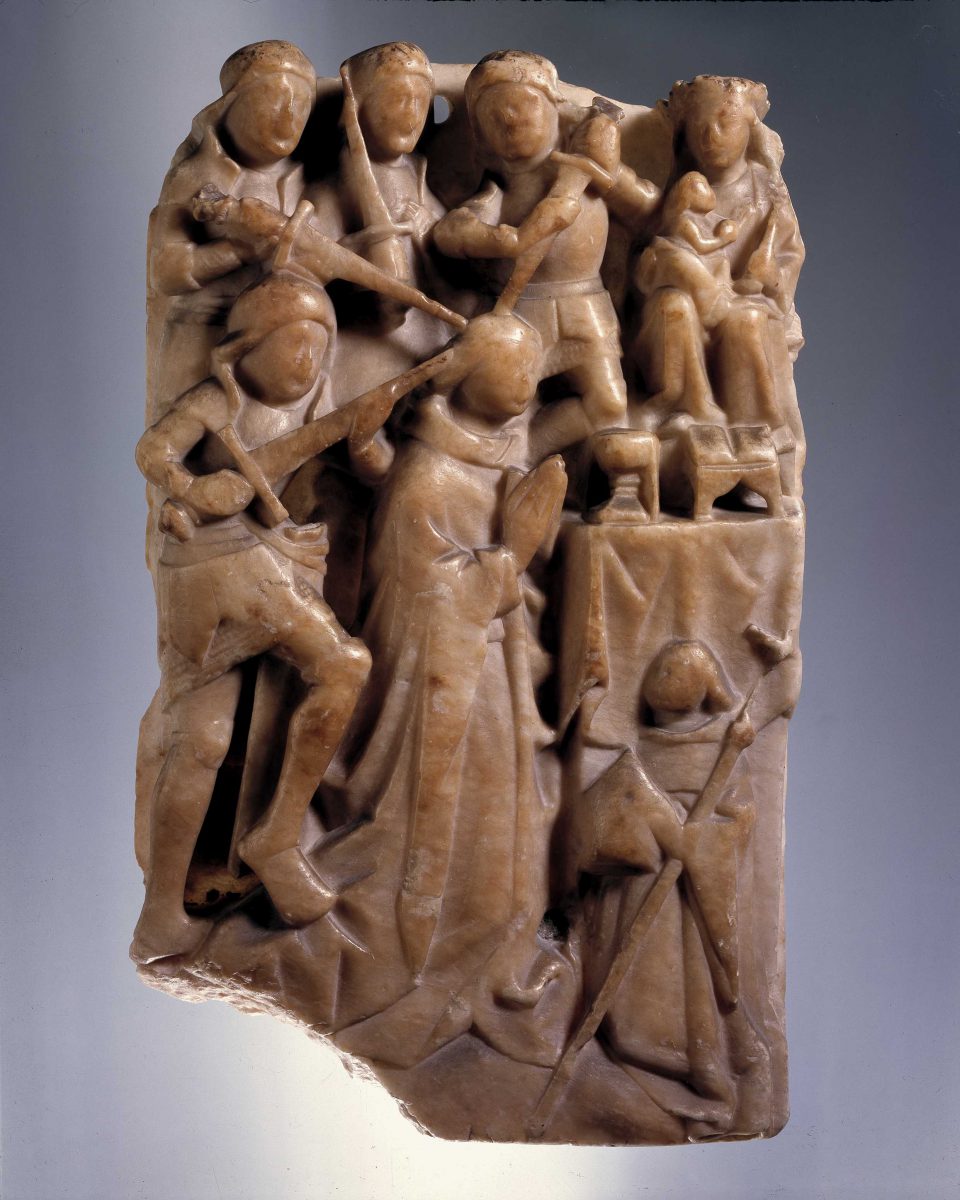
English alabaster carving depicting the murder of Saint Thomas Becket
English alabaster carving depicting the murder of Saint Thomas Becket, second half of the 15th century. Semi-relief. Musée des Antiquités, inv. 626.
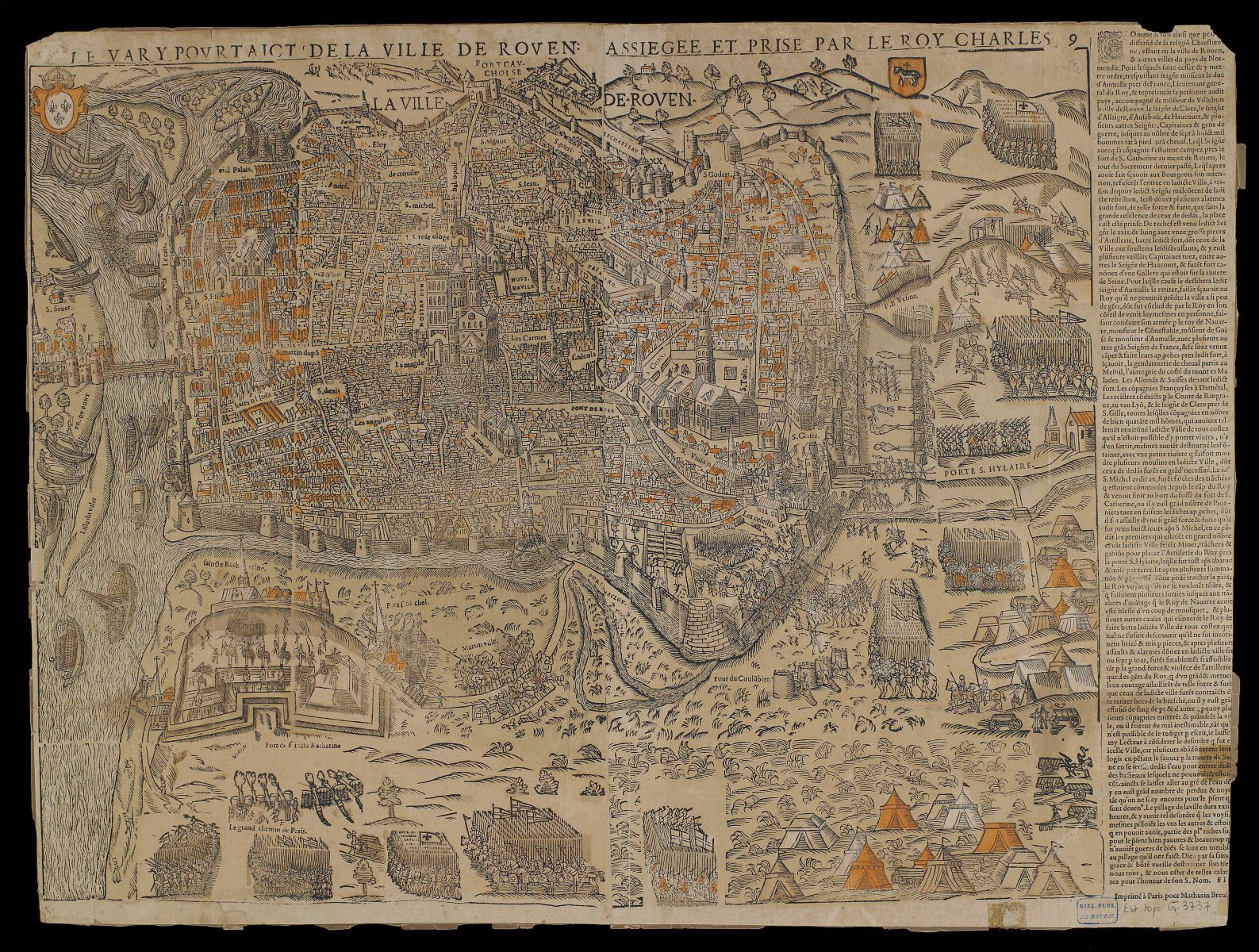
Map of Rouen besieged and taken by Charles IX
Large Protestant communities became established in Upper Normandy, centred mainly on Rouen and Dieppe, following the Protestant Reformation. The Huguenots took control of Rouen in April 1562 shortly after the massacre of Vassy, which marked the start of the civil war, and indulged in large-scale destruction, including mutilation of the statues in the cathedral.
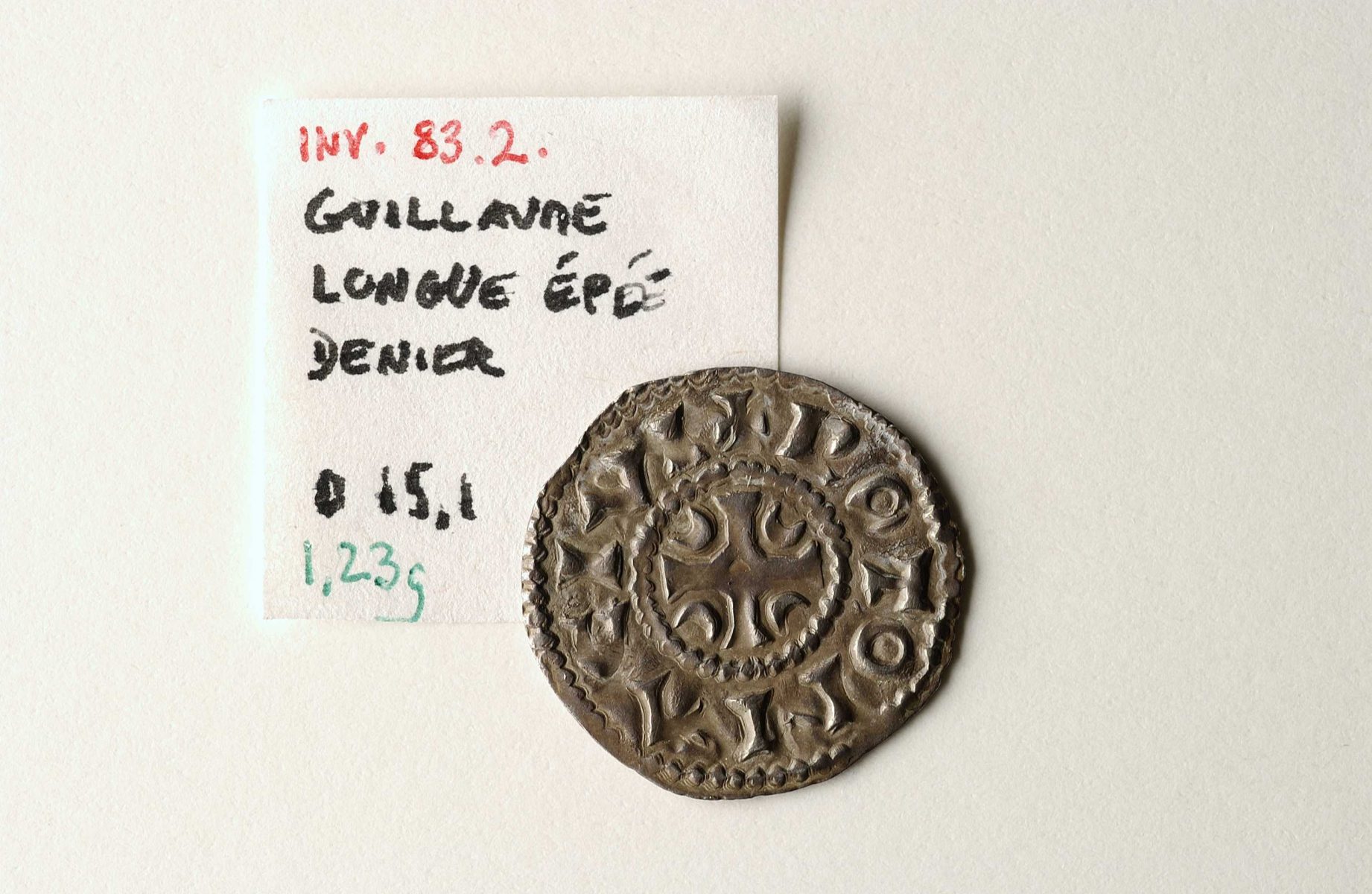
Silver coin to the effigy of Duke William Longsword
This coin show that Rollo’s dynasty had become established. It bears the likeness of Rollo’s immediate successor, William Longsword, his son from a first marriage (927-942)
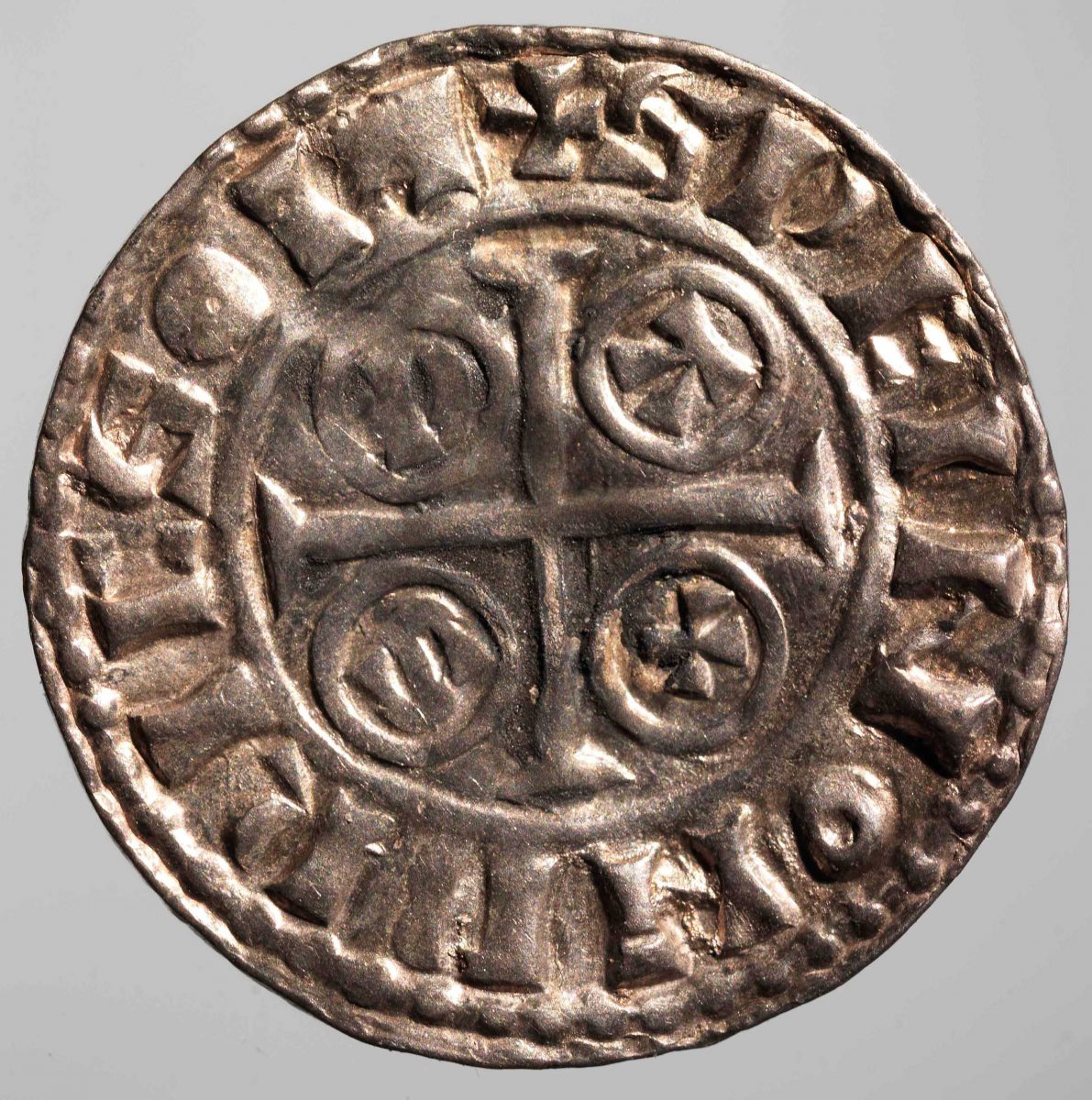
Silver pennies from William the Conqueror
These silver pennies, minted in England after his victorious battle, show the face of William the Conqueror.
The first, minted in London, dates from 1066-1068
The others, from 1072-1074 and 1083-1086, were minted in Exeter, Bristol and Wilton.
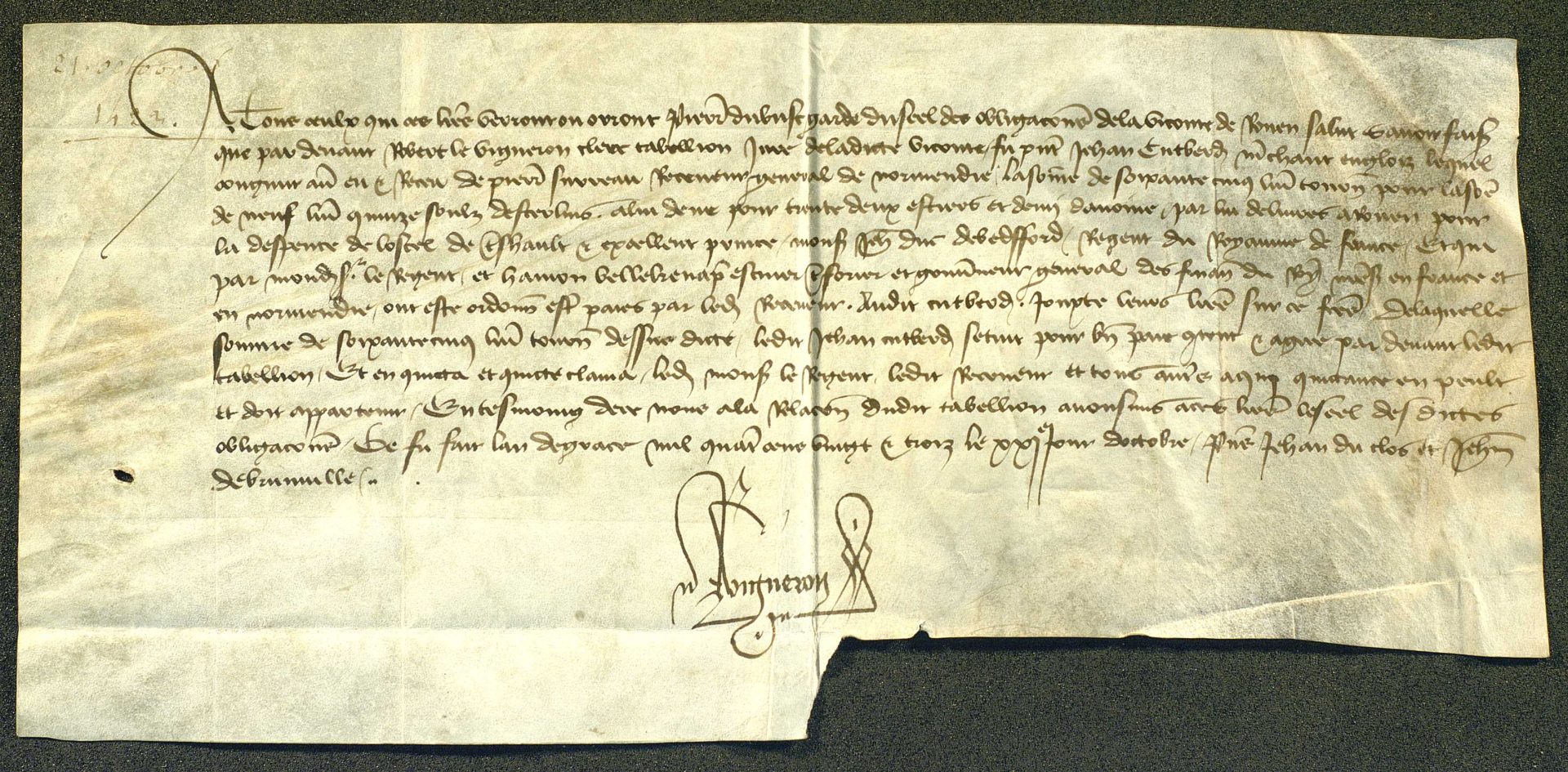
Receipt made out to John Cutberd, English merchant, by Pierre Surreau, Receiver General of Normandy, for a consignment of oats
This commercial transaction, carried out at the height of the Hundred Years War when Normandy was under English occupation, shows…
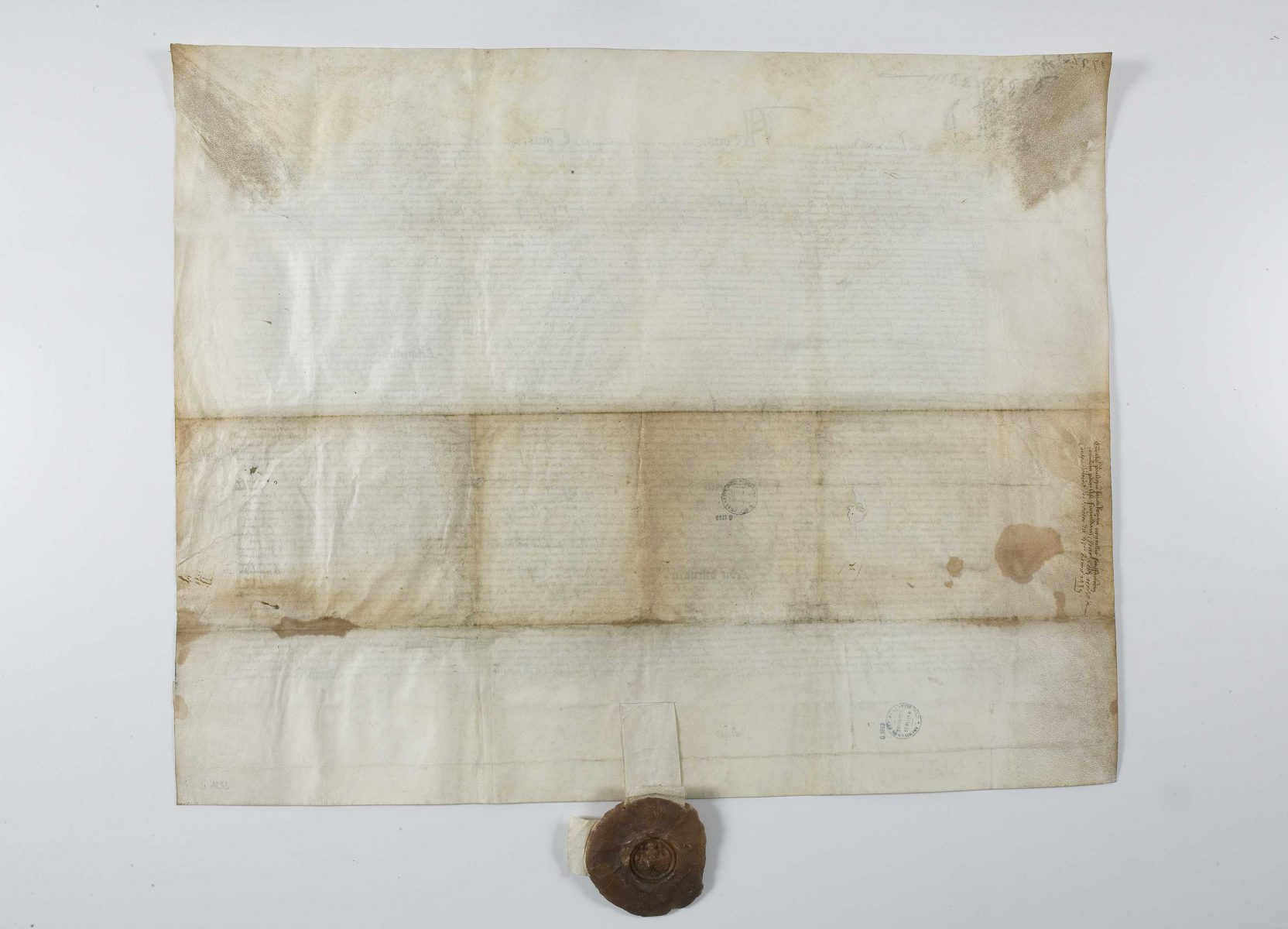
Deed of the Viscount of Rouen under the seal of Henry VI
Henry V was able to assert his authority in Normandy thanks to his control of Rouen. The English stayed for…

